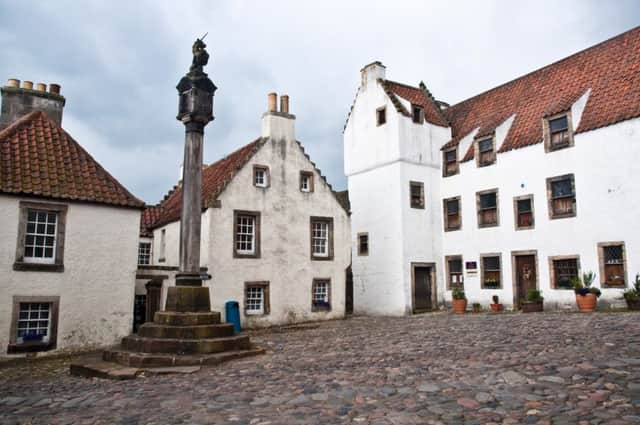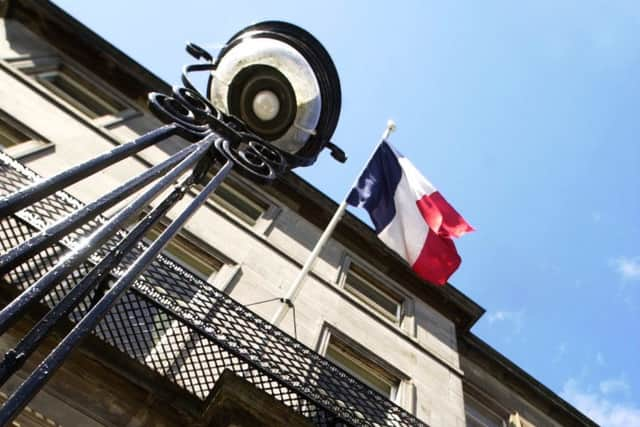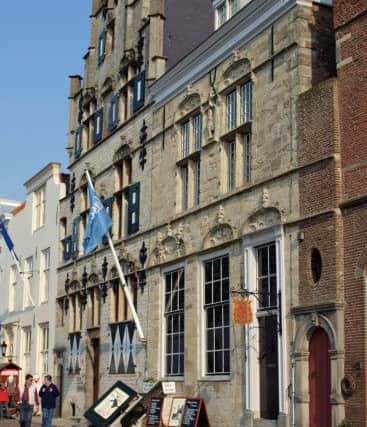Scotland and Europe: A relationship grown over centuries


The Brexit result on June 23 was clear: a majority of Scots wanted to remain in the EU, but England and Wales wanted out.
Nicola Sturgeon said yesterday her first conversation with new Prime Minister Theresa May would focus on the Scottish Government’s desire for Scots to remain EU members.
Advertisement
Hide AdAdvertisement
Hide Ad“I am determined to work with her constructively wherever possible on issues of common interest and concern,” she said.


“Top of those is the issue of our continued place in the EU,”
Before the 1707 Act of Union, Scotland was used to pursuing its own agenda with its European neighbours - regardless of the political situation in England.
Scots merchants then had no option but to ship their goods overseas. Transporting them to the continent via England, and through the lawless Border lands, would have been foolish in the extreme.
By the 18th century, Scotland had developed a vast network of political and economic links across Europe.


France
The Auld Alliance between the medieval kingdoms of Scotland and France remains the best known example of Scots-European diplomacy.
The alliance stems from an agreement first signed in 1295 between Scots king John Balliol and Phillip IV of France. It promised each country could rely on the other for military help if it was invaded by England, and was renewed regularly over the next 250 years before being ended by the 1560 Treaty of Edinburgh.
Advertisement
Hide AdAdvertisement
Hide AdSeveral Scots nobles found themselves lucrative positions in the French court, while Scottish soldiers were in high demand and saw regular action fighting under the French flag. Between 1419 and 1424 alone, when Henry V of England was close to conquering the French kingdom, some 15,000 Scots troops were sent to assist the Dauphin, Charles VII.


This help was not forgotten. In a speech given in Edinburgh in 1942, Charles de Gaulle said: “In every combat where for five centuries the destiny of France was at stake, there were always men of Scotland to fight side by side with men of France, and what Frenchmen feel is that no people has ever been more generous than yours with its friendship.”
The Low Countries
The distinctive pantile roofs and crow-stepped gables found on traditional coastal buildings in Fife are a visual reminder of a time when small burgh ports like Culross and Anstruther were important trading hubs with lowland Europe.


Boats carrying exports like salted fish and wool to Flanders in the late 17th centuries would return loaded with pantiles as ballast - a luxury item when the roofs of most Scottish homes were still thatched.
The crow-stepped gables - known in Fife as corbies - are similar in style to those found on Flemish buildings.
Bruges in Flanders became the first Scottish ‘staple’ port - allowing it to exclusively import and store Scottish goods - in the 15th century. The contract switched to Middleburg, Zeeland, in 1518, but by the late 17th century Rotterdam had established itself as the most important trading port for Scots.
By 1680, there were more than a thousand Scots living in the Dutch city.
Advertisement
Hide AdAdvertisement
Hide AdExamples of the homes once occupied by Scots merchants in Lowland ports still stand. The ‘Scottish House’ (Schotse Huizen) in Veere dates from 1539 and is today a museum. Its pantile roof survives.
Poland
Links between Scotland and Poland date back to the late 1400s when trade agreements were established between Aberdeen and the old Baltic seaport of Danzig, now Gdansk.
An estimated 30,000 Scots moved to Poland to seize new business opportunities in the 250 years that followed - some affluent merchants and men of influence and others the peddlars who travelled the countryside selling hankies, scissors and sewing pins. Some were escaping poverty and others anti-Catholic persecution.
By the 17th Century Poland was known as ‘Scotland’s America’ and under King Stefan Bathory, Scottish merchants became suppliers to the royal court in Krakow.
Among the Scots to make their fortunes in Danzig was Robert Gordon. He later returned to Scotland and gave money to build a hospital in his name which is now known as Robert Gordon University.
Sweden
Although today known as a peaceful country famed more for interior furnishings and pop music than military expansionism, Sweden was in the 17th century was one of the dominant powers of Europe. Its empire included Finland and the Baltic states, stretching into what is now Russia.
The regular battles it waged on mainland Europe required huge amounts of troops - and Scots mercenaries were quick to enlist.
Advertisement
Hide AdAdvertisement
Hide AdAmong those to serve in the Swedish royal army was Alexander Leslie. The distinguished officer served during the Thirty Years’ War and returned to Scotland to take command of the Scottish Covenanter army in 1638.
The port town of Gothenburg was a particular home from home for Scots. Just a few days sailing from Aberdeen, it provided the ideal trading base for merchants operating across the Baltic Sea.
The Scots enclave in the city was so prominent it was granted two seats on the town council in 1621.
